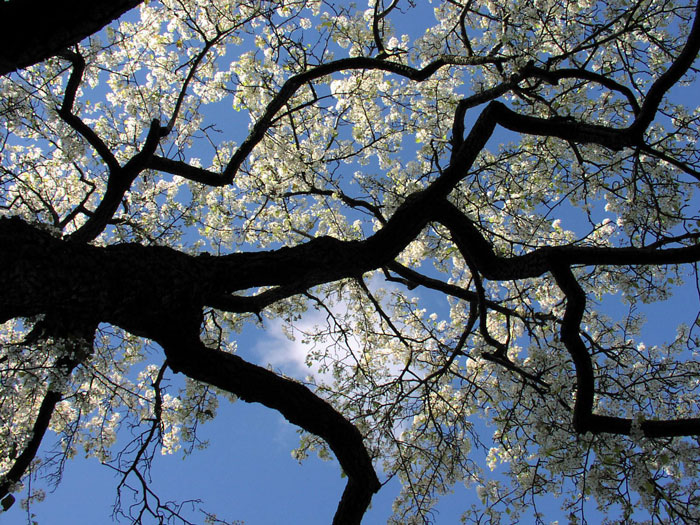Pyrus kawakamii
 evergreen pear
evergreen pear

Several trees in the rose family have remarkably showy spring blossoms: pears (Pyrus), apples (Malus), and – most famously – cherries (Prunus). Most have a hard time telling them apart, but evergreen pear is always the earliest of them all to bloom, bursting into white flowers usually around late January. Pink saucer magnolia (in the magnolia family) is in bloom by then too; together they offer a striking floral prelude to spring.
The small pears, which dangle on long stalks, are inedible. Our evergreen pears, true to their name, usually keep a few leaves throughout winter, but many went entirely bare in the unusually deep and extended freeze of December 1972, as did the Chinese elms.
The blossoms with their delicately yeasty fragrance and the shiny 3-inch leaves are remarkably similar to those of its deciduous cousin, P. calleryana. Indeed, evergreen pear is included by some in P. calleryana, a widely variable species. P. calleryana, at least the kinds that have been planted in the States, have a somewhat upright form, contrasting strongly with the characteristic low, spreading, irregular canopy and dark, deeply checked bark of evergreen pear. P. taiwanensis has also been proposed as a name for the evergreen pear. For now, we will tentatively continue to treat our pear as P. kawakamii, and to enjoy its unique features, until some kind of nomenclatural clarity emerges.
See a small group in the raised planting area on the right as you approach the main entrance of Green Library’s East Wing. A row of five is on the north side of Braun Music Center. (Opposite them, next to the Post Office, stands a Pyrus with similar leaves, kept through the winter, but with upright form and bark closer to that of P. calleryana – it is esssentially an evergreen P. calleryana.) Four grew on the northwest corner of Dinkelspiel Auditorium, and were replaced, after some attrition, by a small grove of Canary Island pines.
Name derivation: Pyrus – the Latin name for pear; kawakamii – botanist Takiya Kawakami (1871–1915).
About this Entry: Authored Feb 2025 by Sairus Patel.



